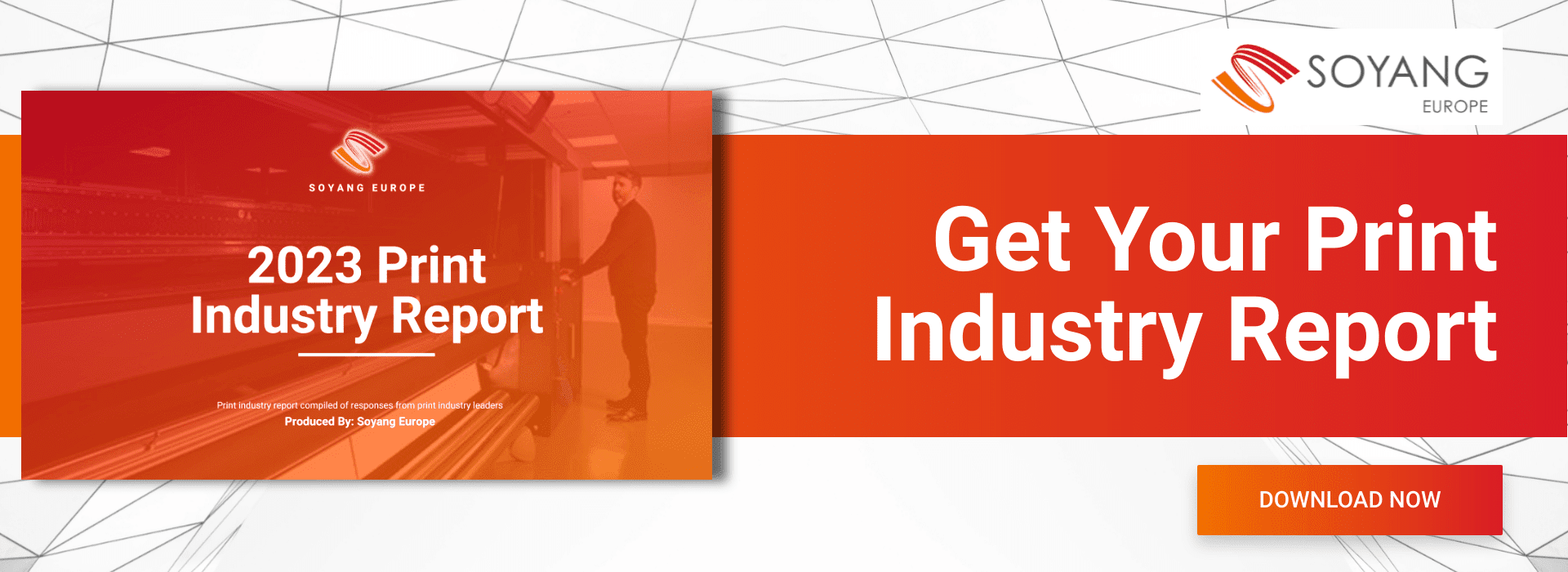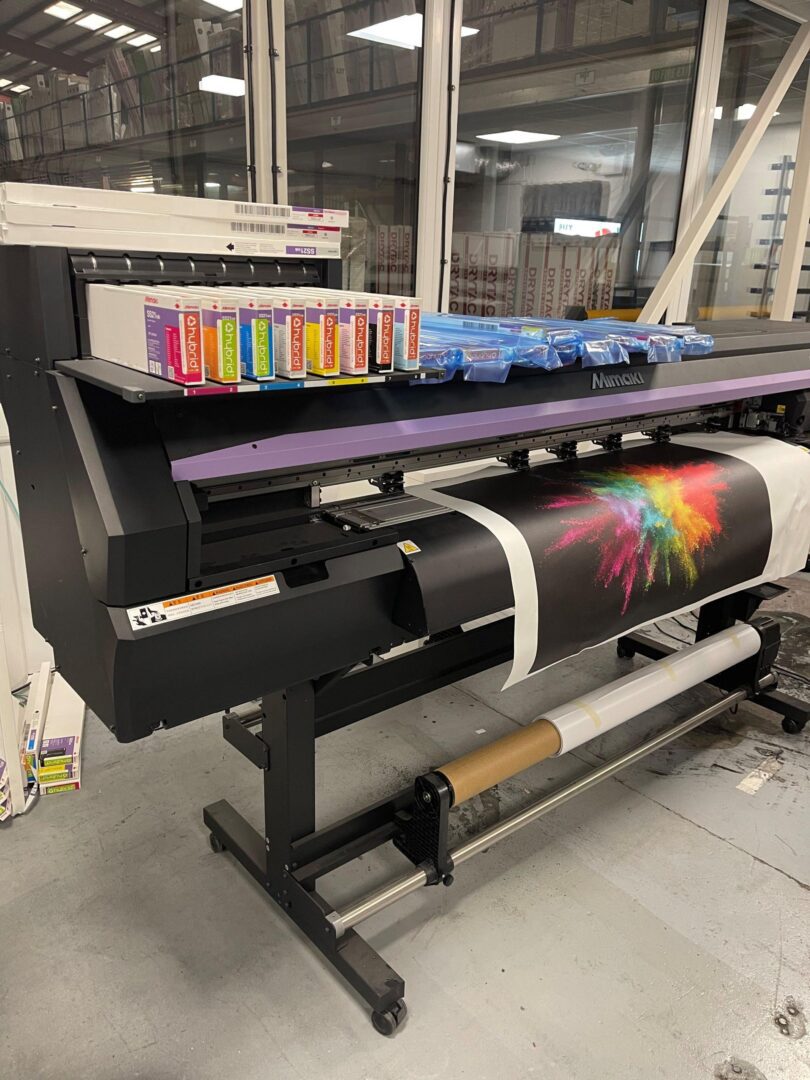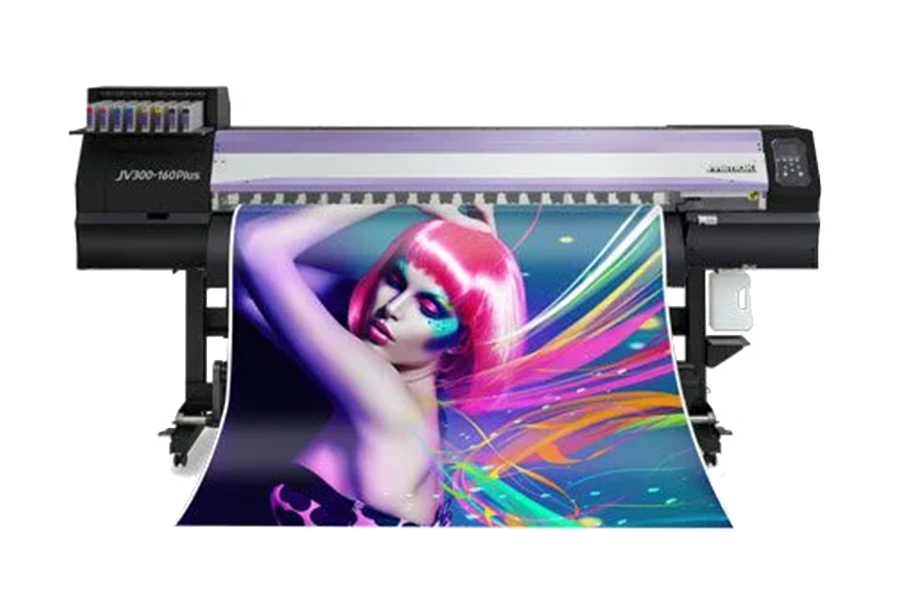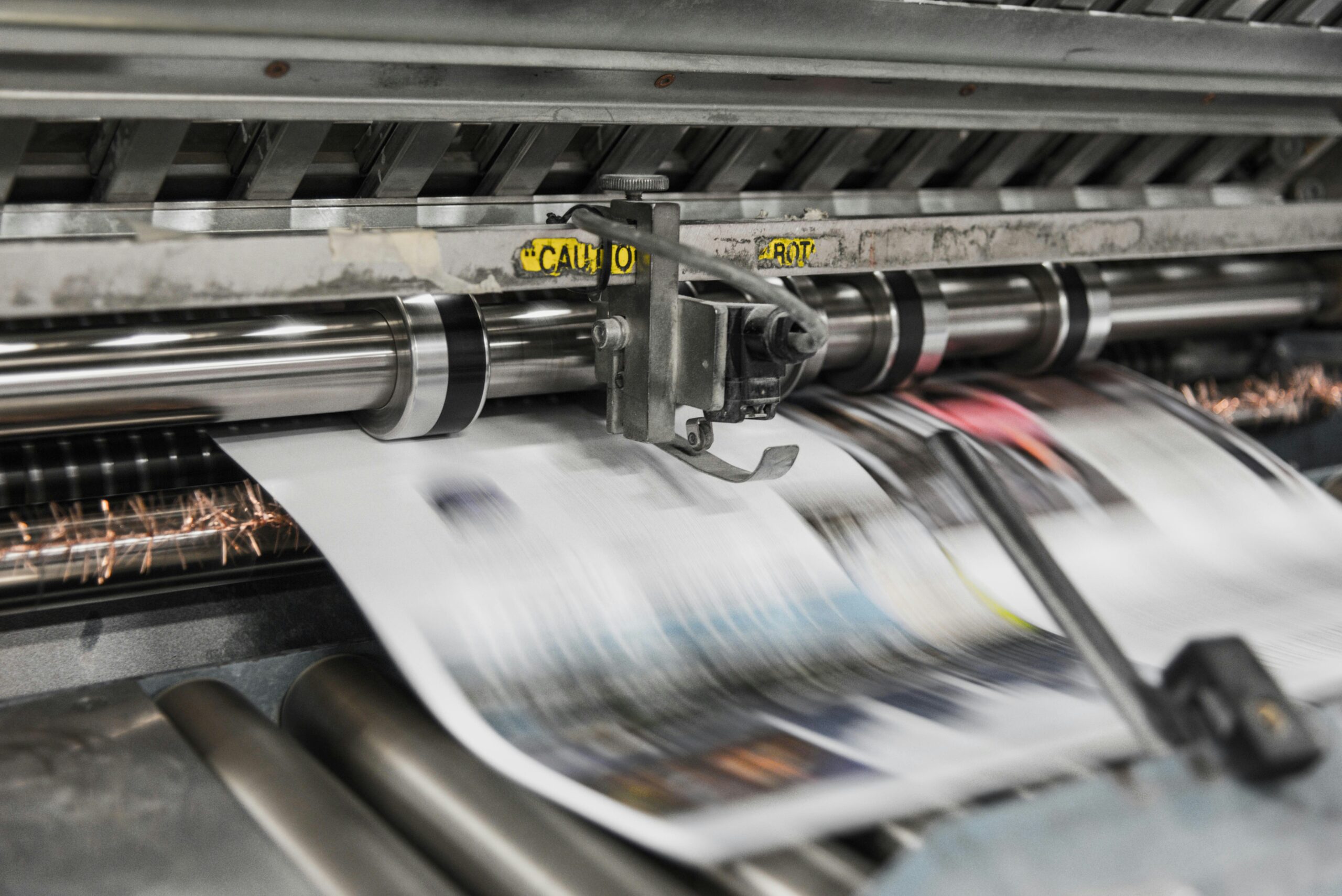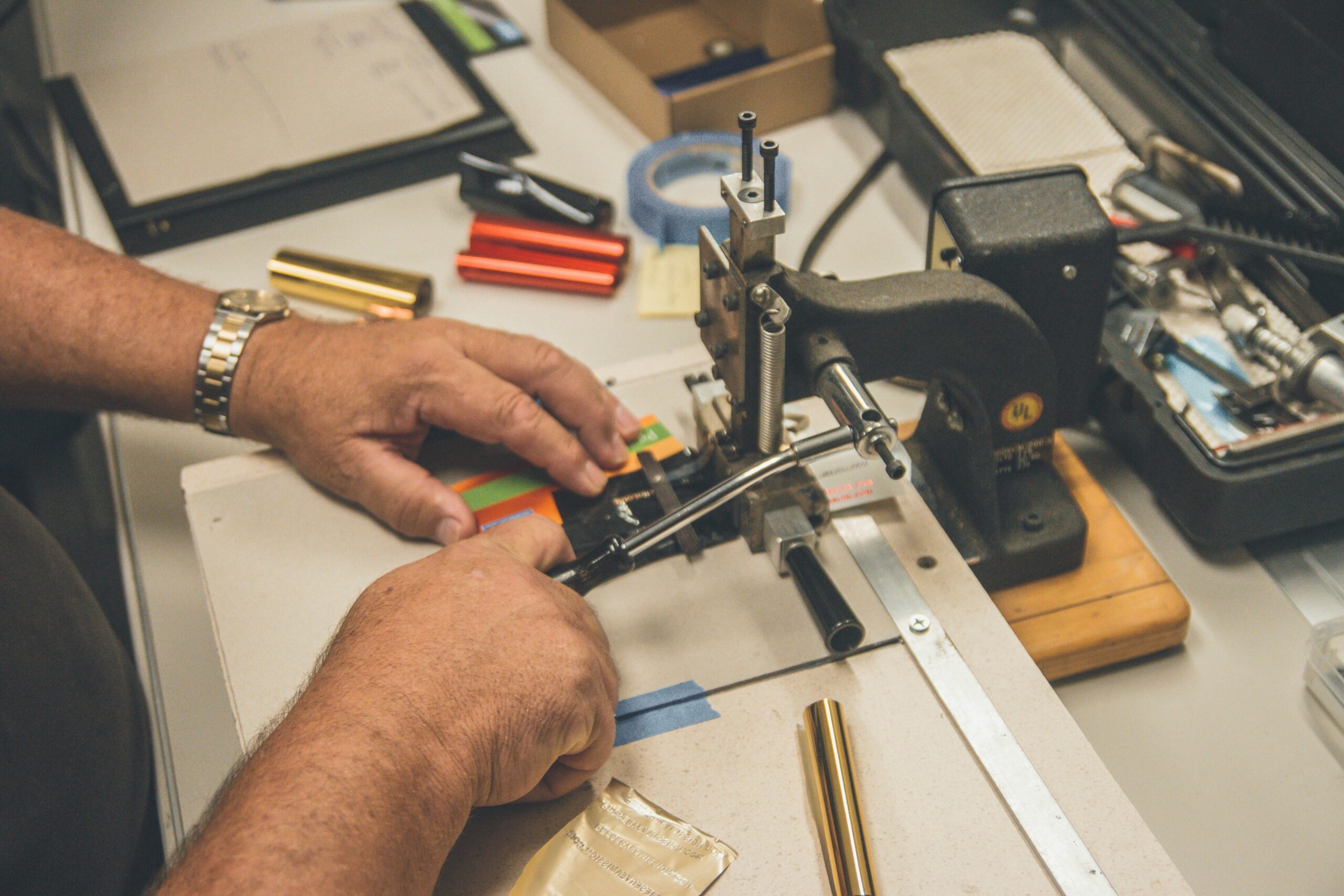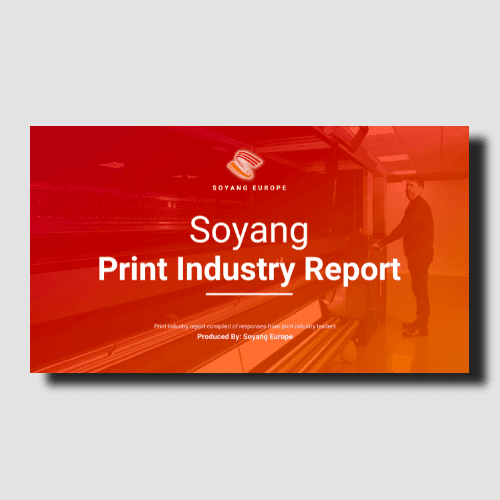For a print business, investing in a new large format printer is an opportunity to expand services and increase turnaround times. For every other business, it’s a chance to bring work in-house so you can protect costs and quality. For everyone, it’s an opportunity to explore new routes to profit. But which printer is the right wide format printer for you? Here’s Soyang’s guide.
- What is a large or wide format printer?
- What products can you print with a wide format printer?
- How ‘large format’ is a wide format printer?
- Why invest in a large format printer?
- How to choose a large format printer: other considerations
- Maximising profit with a wide format printer
- Benefits of choosing a large format printer
- Print better with Soyang
What is a large or wide format printer?
Large format printers and plotters enable you to print large format projects onto a wide range of media.
In many instances the basics of large format printing are much the same as your home printer, only on a grander scale, although there tends to be greater variation in the print types available.
Most wide format printers use one of these four print methods:
- Laser
- Dye Sublimation
- Plotter
- Inkjet
Inkjet printers are closest to the standard home printer and the ones most frequently used across industry, yet they can print on far more than paper, with fabrics and even poster board capable of being handled by some models.
Dye sublimation printers inject the ink directly into the media, almost like a tattoo. It ensures that exceptionally high-resolution printing is also exceptionally durable.
Plotters tend to be favoured by construction and architectural services. Laser printers tend to deliver higher print speeds and lower cost per print, although the initial equipment usually costs more.




What products can you print with a wide format printer?
There are differences between printer and plotter models but, in general, larger format print systems can be used to print:
- Banners (including roller and mesh banners)
- Wallcoverings
- Posters
- Hoardings
- Floor coverings (indoor and outdoor)
- Self-adhesive vinyls
- Window films
- Architectural plans and AutoCAD prints
Read: Products You Can Print On A Wide Format Printer To Maximise Profits
How ‘large format’ is a wide format printer?
Typically a large format printer will comfortably handle the larger standard paper sizes:
- A0 – 118.9cm x 84.1cm
- A1 – 84.1 cm x 59.4cm
- A2 – 59.4 cm x 42 cm
Very large format printers may be able to handle widths of up to 1.52m and paper rolls of around 30m in length.
Whilst we’re giving sizes in relation to paper, most large format inkjet, laser and dye sublimation printers will comfortably handle vinyls and other media.
When buying a printer, consider not just the print jobs you’re managing now, but the jobs you’re likely to take on in the future. You may, for example, feel a printer capable of delivering A1 prints is all you need, because that’s all you’ve needed up until now. But is that limit a strategic choice or one imposed by the limits of your existing printer? If you could print to larger widths, could you take on a greater range of work?




Why invest in a large format printer?
Increase print capability
Floor graphics, stickers, banners, posters, signs and technical plans – most large format print models can handle a generous core of materials. Some models offer slightly more niche capabilities like printing on corrugated PVC board (of the sort you might see used on estate agent boards).
As a print business the ability to print a greater range of media could be important, especially if your print shop is based among potential customers who could take advantage of your ability to print on a wider range of media (or to a larger scale) than your competitors.
For every business, however, there’s always a balance to be struck between offering a breadth of services that others don’t and ensuring you can remain profitable. That balance will be different for every print company, but there’s no doubt that the right printer can give your business broader appeal.
Increase turnaround
If the above point is about printing more, this is about doing it faster.
Every print business is constrained by the limits of its printers. Yet it’s not just the fact that a faster printer lets you take on more work and get it back out of the door in a timely manner. Choosing a printer capable of delivering at real pace could either:
- Save you from having to invest in a second identical machine
- Enable you to invest in printers with additional/alternative capabilities
- Minimise the space taken up by your printers (which could potentially enable you to operate from smaller and cheaper premises)
Do more in-house
If you run a print shop, a new large format model gives you the opportunity to expand services and/or service delivery as we explore above. But you don’t have to work in the print sector to benefit from buying a large format printer.
It’s all a matter of cost, quality and control. If you’re habitually racking up big monthly print bills, buying your own large format printing machines could deliver big savings.
Similarly, if outsourcing your print continually presents issues with quality or consistency, bringing it in-house can solve the problem.
And if outsourcing print for your clients leaves you in an uncomfortable ‘middle man’ position, investing in your own printer can help keep you in complete control.
Work more sustainably
Newer tends to mean more eco-friendly, but don’t just settle for the improved energy efficiency of the new model. If it’s time to upgrade your large format printer, take the opportunity to look again at your existing processes to see how a new printer could help you work in a more sustainable way.
The right printer, for example, could help you remove non-eco-friendly solvents from your everyday processes.
Price
Price is always going to be a major consideration when choosing your large format printer, but we’d always recommend thinking about price in a broader, long-term way.
The printer that costs less upfront might potentially have a financial sting in the tail once in regular use, and for a number of reasons:
Energy efficiency
Every large format printer will need to stay switched on, because it needs to periodically run its own ‘housekeeping’ to ensure, for example, the print nozzles don’t dry up. If it’s always on, you’ll want to check its energy consumption in high and low power modes, because a more expensive purchase price could mean lower running costs.
Print costs
It’s not just about whether the printer sips or guzzles ink; it’s also a matter of how easy the printer makes it to get the job right first time.
Do you reach the end of each working day with a pile of wastepaper/vinyl that you’ve printed in error? If that’s because the printer (or software) made it easy to print the wrong quantity or quality, you might want to look at the ways a better printer could help prevent wasting materials.
Compatibility
Any new wide format printer needs to be able to handle your bread-and-butter work – that goes without saying – but if you’ve built up a store of printer specific consumables, you may risk having to jettison them unless your new printer is compatible with the same inks, print heads and media.
Buy or lease?
We’ve focused on buying in this guide, but there’s a large and healthy market in large format printer leasing that could benefit your business in a range of ways:
Spread the cost: As a rule of thumb, if you lease a printer for the long term you’ll end up paying more for it than if you’d bought it outright. That needn’t be the case, however, if you take advantage of all the benefits of leasing, such as…
Stay up to date: Some printer lease deals operate a little like your mobile phone contract. Every three years or so, you may be able to switch your printer for a newer model. Yes, it means you remain committed to monthly lease payments for another three years, but at least that money will be going towards a brand new model.
The printer you really want: The all singing, all dancing printer you really want may be outside your price range when buying outright. Leasing your large format printer could make it affordable.
Maintenance included: Some lease deals include maintenance. Some enable you to add the cost to your monthly payment. Either way, it keeps things fuss-free.
Tax deductible: All lease payments will be tax deductible in that tax year, helping you avoid the complexities of capex.
Read: Wide Format Printers – Should You Buy or Lease?
Colour or black and white?
You’d be hard pressed to find any regular office printer that doesn’t print in both colour and black and white. Certainly if your business is printing large format banners and signs, colour will be a must. But in the world of large format print, there’s still a significant market for B&W printers and plotters, primarily from the architectural sector.
Where you only need plans printed in black and white, why pay extra for colour capability?
Performance
Speed, quality, simplicity: when it comes down to it, day-to-day satisfaction with your large format printer is a combination of these three factors. Let’s break them down individually.
Print speed
You might think the speed of your printer is simply a matter of how quickly it spits out the completed poster or banner, but the reality is there are plenty of stages during the process where speed is a factor.
These include:
- The time taken to warm up after sitting idle for a period
- The time taken to process the files you want to print
- The time taken printing black and white drafts; and
- The comparison between the draft time and printing in presentation mode (a cheaper printer will typically mean a bigger time difference between draft and high-quality modes – and when that difference runs to several minutes, the impact can be profound)
An additional consideration is the way you measure print speed. If you’re wanting to keep a constant flow of print running, the throughput speed of your large format print system is what really matters. This will be affected by drying times, calibration, printer head cleaning and more, so any calculation of print speed needs to include these non-print elements.
If you’re printing less constantly, those inter-page interventions matter less, and you need only consider the actual print speed.
Print quality
It’s not always easy to gauge print quality when buying print systems online. That’s why we’d always recommend a physical print shop visit, where you have the opportunity to take the models for a test drive.
That will give you the opportunity to compare colours, resolutions and the capability of a printer to deliver its image quality consistently across the media you use most frequently.




How to choose a large format printer: other considerations
Beyond the core considerations are many more factors that could influence your choice of printer.
Simplicity
How easy is it to set up a print job? change an ink cartridge or refill the toner? Does changing a roll of paper require the strength of a weightlifter or the litheness of a contortionist?
If the printer is to be networked, how easy is it to set up? How much automation does model X offer over model Y and which will save you the most time and money?
What sort of warranty comes with the printer and, if you do need to pay for a service plan to ensure it stays well maintained, what’s included and how easy is it to book a call?
All the above are issues worth considering.
Noise
How noisy is too noisy? No printer is going to be completely silent, but the combination of cooling fans, rollers and more is inevitably going to create some noise.
In your print room, that’s unlikely to be an issue. In a corner of the office, it just might be. Again, being able to test run a printer in person is invaluable in assessing noise levels for yourself.
Footprint
So much of choosing the right printer is about driving profitability from your choice. You may, for example, be able to offer competition-beating levels of service if you buy numerous specialist plotters and printers, but each additional printer requires additional space, and by their very nature, no large format print system is especially small.
So rather than choosing multiple printers that offer huge capability but require you to lease larger premises, the more cost-effective route may be to compromise with a multi-function printer than enables you to deliver most of the service levels you were aiming for, but in a single, relatively compact unit.
We’d always recommend seeking expert advice to achieve the right balance for you.
Support
Every large format print machine worth its salt should offer firmware updates to help keep it secure and ensure it keeps performing at its best, but manufacturer support doesn’t last forever. It’s worth checking that your printer will have at least a few more years of manufacturer support before it is rendered obsolete.
Servicing
Service and maintenance packages can be enormously important to the professional print shop and any business that relies heavily on its large format print capabilities.
It’s not just about the regular servicing that can keep breakdowns to a minimum (although that’s certainly part of it); it’s the fact that a regular maintenance plan can ensure print quality is maintained. In addition, the older and less well serviced a printer is, the more likely it is to run inefficiently, which will also have an impact on your business’ sustainability.
For a printer that runs cleaner, better and in a more eco-friendly way, always ask about servicing.
Sustainability
A wide format printer offers scale (of course) but it’s important that it also offers flexibility if you are to be able to keep waste to a minimum. In part, your print management system will be responsible for ensuring print is laid out optimally to reduce waste, but the printer’s ability to work with different media sizes will influence the amount of stock you need to hold and the amount of trimming required.
As noted earlier, it’s also important to look at the energy consumption of the printer for the operating pattern you have planned for it (rather than simply comparing sleep mode consumption).
Maximising profit with a wide format printer
Reduce labour costs
One of the by-products of investing in new technology is that it should enable you to do more with less resource. If your new printer is going to deliver production efficiencies through automation, start planning now how you could redeploy the person/people whose time will be freed.
Explore fresh opportunities
You may buy a large format printer with one type of product or service in mind, but it’s worth remaining alive to the additional opportunities it may present. A printer bought with the intention of printing vehicle wraps, for example, could offer the potential to create a valuable secondary income in vehicle decals.
Sell sustainability
Operating sustainably is an aim for an ever-increasing number of businesses. If you’ve just bought a wide format printer that increases your ability to print using only eco-solvents, or which helps you to reduce waste, market those capabilities.
Understand the possibilities
We might well have titled this section ‘read the instruction manual’. Even if you’re well versed in wide format printing, it’s a near certainty that your new printer will be able to do things your old one couldn’t. Taking a little time to understand its capabilities can open up new avenues of profit you didn’t realise when you were examining the product spec.
Benefits of choosing a large format printer
We’ve already seen how a large format printer can help your business increase your print capabilities, turnaround times and control, but there are other benefits too:
Security: Outsourcing your print work brings an unavoidable level of risk, even if that risk is small. Keeping your printing in-house eliminates that risk and may be worth considering for more sensitive materials.
Not just for large format: Yes, your printer is capable of printing vast banners, but that doesn’t mean you can’t use it for much smaller jobs. Delivering the same quality of print for every document enables you to achieve real brand consistency, while the right print management system can ensure you squeeze more out of every page, limiting waste.
Easy iteration: Print is frequently not a ‘one hit and done’ process. This year’s poster or banner may be adapted for next year and the year after. Running your own large format print system means all files and project iterations will be held in-house. You have a complete version history to hand so you don’t have to spend time recovering files from the print shop or worse, reconstituting lost designs.
Drive additional sales: For non-print shop businesses, buying your own large format printer could enable you to create ad hoc print projects to respond to opportunities in an agile way.
For example, your business could be able to capitalise on an upcoming local event, but only if you’ve had the foresight and planning to commission print work ahead of the event. With an in-house print capability, you can respond to changing events fast, and print posters, banners and POS material without needing to give your print supplier days’/weeks’ notice.
Print better with Soyang
To maximise its potential, your wide format printer is going to need feeding with the right materials. Soyang can help you get more from your new printer with banners, self-adhesive vinyls, floor coverings, window films and more.
To find the right media for your wide format printer and print job, talk to us.
